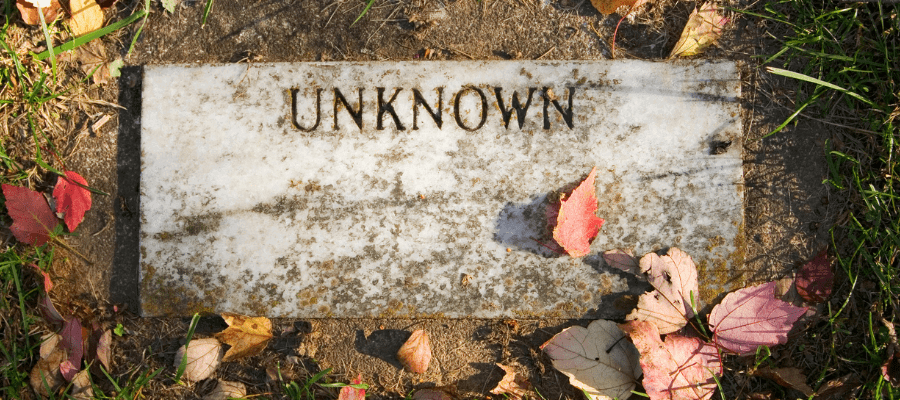Services > Specialist Forensic Service
Specialist Forensic Service (SFS)
See also:
Forensic Anthropology
Forensic Archaeology
Spatial Analysis and Mapping Service
UAVs
Walkover Survey
Archaeological Excavation
3D Crime Scene Modelling
Diatoms
3D Digital Body Reconstruction
Entomology
Soil Botany Pollen
Bones ID

Cellmark Specialist Forensic Services are delivered by some of the most experienced Forensic Anthropologists and Archaeologists in the UK. They work with UK and international law enforcement agencies, coroners and the military to provide expert assistance in a variety of investigations ranging from searches for people who are missing, presumed murdered, through to disasters with multiple fatalities.
Our Expertise and Experience
Working in collaboration with specialist forensic environmental scientists, the team provides expertise in criminal cases involving:
- the search for buried or concealed human remains and other items
- the reconstruction of victim and offender activity at these crime scenes
- the recovery and analysis of decomposed, burned, mummified, fragmented, incomplete or skeletalised human remains.
The team is highly experienced in large and complex investigations, regularly conducting examinations in challenging environments. Our scientists can help to ensure that vital forensic evidence is maximised in the investigation of:
- mass disasters and multiple fatalities (DVI – Disaster Victim Identification)
- domestic and industrial accidents
- terrorist incidents
- fire scenes
- dismemberment cases
The team also assists with post-mortem examinations at mortuaries and regularly undertakes laboratory examinations in collaboration with experts from other disciplines (including forensic biology, chemistry, marks and traces ballistics, environmental sciences).
How can Cellmark Specialist Forensic Service assist?
In addition to forensic anthropology and archaeology, we also work with a team of specialist environmental scientists who undertake disciplines such as forensic botany, soil analysis, diatoms, entomology and isotope analysis. We are not only experienced at collecting samples for our environmental science partners but will work with investigators from the stage of evidence recovery through to analysis to ensure that these and other evidence types are used to their full potential.
Here is a small selection of the types of cases that we can assist with:
Bones are often found by members of the public or during police-led searches. In the majority of cases, our forensic anthropologists can rapidly establish if any bones or fragments of bone are human or non-human. Using our Bones ID service, the police can send photographs to us for rapid assessment
We provide advice free of charge on the recommended next stage, such as a scene examination or laboratory examination.
Establishing the identity of a deceased person is key to Coronial and criminal investigations. Early involvement of Cellmark's Forensic Anthropologists at scene and post-mortem examination are especially important for cases involving decomposed, burnt and skeletalised remains.
- Comprehensive examination at the scene to ensure maximum recovery of remains.
- Post-mortem examination to provide a biological profile (age, sex, living stature, ancestry and individual features including previous diseases and injuries).
- Generates accurate information for media appeals and narrowing parameters for searching missing person databases.
- Ensure that the most appropriate sample for DNA analysis is recovered.
- Advise on numerous methods to assist identification, such as isotope analysis and ethnic inference (DNA) to help understand geographic origin and subsequent movement whilst alive.
- Cold-case reviews to assess whether all opportunities for information relating to identity have been exploited.
Our anthropologists and archaeologists can ensure that human remains and associated evidence is recorded and recovered as effectively as possible, potentially enabling a wide range of questions to be addressed:
- Are the bones human? You can send images to our Bones ID mailbox for assessment.
- How much of the skeleton is present and what is missing?
- Is there any evidence of injury from around the time of death?
- If DNA can’t aid identification, is not applicable, what were the sex, stature, age, ethnic ancestry, and identifying characteristics (e.g. old injures or evidence of disease) of the person?
- Was the person deliberately buried or covered by natural processes?
- Is there any indication that an offender was involved in the deposition?
- Is there any evidence that the suspect(s) have been to this location?
- How long have the human remains been in this location?
- Have the remains been moved here from another location?
- Over how wide an area are the remains spread?
- How did the remains come to be dispersed e.g animal activity, natural processes, dismemberment?
Potential targets can be identified at ground level through a combination of archaeological field-craft, searches by dogs, and geophysics. Targets can then be examined through archaeological excavation.
- Typical searches include gardens, allotments, woodlands, quarries, industrial areas, and below interior floors.
- Forensic archaeology maximises the recovery and interpretation of evidence and minimises contamination.
- Forensic anthropologists advise on the recovery process for any human remains.
- Soils, entomology and botany can provide indications of how long a body has been buried.
- Environmental evidence can also help to understand physical associations between suspects, victims, and scenes.
- Tracing the recent movements of the deceased, including the movement of the body after death.
Involvement of our archaeologists from the earliest stage ensures that such features can be assessed and the appropriate level of examination undertaken. This can range from non-invasive techniques (field craft, geo-physical survey, search dogs), to controlled archaeological excavation.
- Specialist assessment, recording, and examination.
- Provision of expert opinion on whether it can be eliminated with a high level of assurance
- Confirmation that it is of significance to a police investigation.
- Comprehensive recording of the feature, including its accurate location.
- Preservation of all evidence types.
A range of archaeological and ecological search techniques can be employed to narrow down large search areas, working in partnership with other search specialists and co-ordinating with POLSAs. A huge range of data and information can be integrated and analysed to provide prioritised targets for search at ground level.
- Specialist analysis of mapping, aerial photography, geological data and any type of spatial information held by the police.
- Botany, pollen, and soil analysis to identify target areas (e.g. analysis of soil or vegetation from a suspect’s clothing, footwear, or vehicle).
- Drones to capture specialist data that is not available to UK police forces and analysis to identify potential deposition sites.
- Ground-based searches to identify areas of disturbance that correlate with the timescales and circumstances of the investigation.
Read more about our Spatial Analysis and Mapping Service (SAMS).
As experts in Osteology (the study of the skeleton and bones) our forensic anthropologists can provide additional skills to augment those provided by the forensic pathologist.
- Reconstruct fragmented skeletal or badly burnt remains.
- Identifying and interpret traumatic injuries to bone, including dismemberment.
- Provide information relating to the deceased’s biological profile (sex, age, stature and ancestry).
- Identify individuating features that might assist with identification.
- Diatoms analysis can provide evidence on the likelihood of drowning.
- Entomology can assist in understanding the minimum time that has passed since death.
Cellmark forensic anthropologists and archaeologists can advise on the most appropriate method(s) to estimate time since death. Expert opinion can be provided from examination of the remains and from the interpretation of the chronological sequence of events that occurred at the deposition site (for example, if the bones are situated below a medieval floor). They can also advise on other areas of specialism that might assist, such as insect activity, plant growth, accumulation of soils and other materials, and radiocarbon dating.
By examining scans (radiographs or CT), a forensic anthropologist can provide an estimated age for a living individual.
- Provide evidence on the likelihood that the individual is a certain age, e.g. over 18.
- Can impact the classification of the crime and the criminal proceedings.
- Used in cases of human trafficking, forced marriage, refugee / asylum / immigrant applications and civil disputes.
Cellmark forensic archaeologists and anthropologists can advise on the case-specific legal and practical requirements to undertake exhumation.
- Assisting with careful excavation to ensure minimal disturbance or disruption to the burial or remains.
- Ensuring the correct individual is exhumed from graves with multiple burials and unmarked graves.
Anthropological examination in collaboration with our specialist DNA analysis provides the optimal process for a successful identification.
At Cellmark, we facilitate and co-ordinate specialist DVI teams trained in scene recording, reconstruction and interpretation, victim recovery, examination and identification. Cellmark’s anthropology and archaeology team have been involved in numerous complex and challenging DVI incidents, working to national and international DVI standards and alongside many internationally recognised organisations.
We maximise the reconciliation of remains, their identification, and the interpretation of their manner of death.
- Terrorist incidents, natural disasters, transportation accidents, domestic and industrial accidents.
- War crimes and military / combat fatalities.
- Criminal investigations involving multiple fatalities.
- Recognition of altered human remains.
- Reconstruction of fragmented and disrupted remains
- Identification of the best DNA samples.
Our forensic anthropologists and archaeologists can assist in the systematic search, recording and recovery of human remains that are often highly disrupted, burnt, fragmented and commingled.
- Provide a comprehensive record of the scene and interpret the position of the human remains, including where the individuals were at the time of the incident.
- Mortuary examination to assist with establishing identity.
- Understanding completeness of remains.
- Identifying injuries sustained pre- and post-incident.
- Interpreting the impact of the fire / explosion on each individual – see DVI
Training Courses
